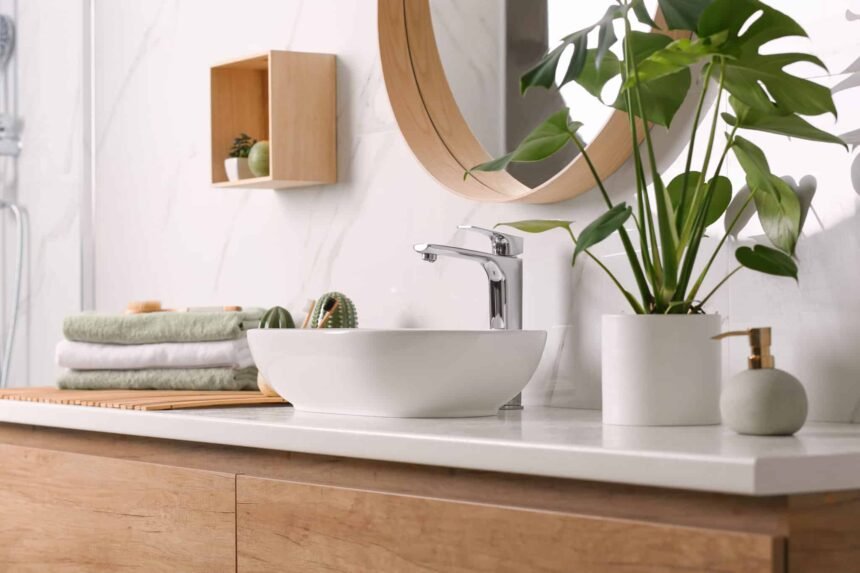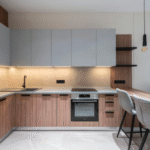When people type reeded vanity into a search bar, they’re not just browsing for a location. They’re usually looking for answers: What size vanity works for my bathroom? Should I get a single or double sink? What materials last longest? How much storage do I really need? In American homeowner forums, the bathroom vanity is one of the most discussed upgrades because it sits at the intersection of design, function, and budget.
Why the Vanity Deserves Attention
Think about it: the vanity is where you start and end your day. It holds your toothbrush, hairdryer, skincare products, and towels. If it’s poorly designed, clutter takes over. If it’s too small, you’re constantly running out of space. If it’s too big for your room, the bathroom feels cramped.
That’s why so many homeowners in the U.S. stress the importance of measuring the space properly before buying a vanity. A well-chosen vanity doesn’t just make life easier — it adds to your home’s resale value.
Size and Proportion: Getting It Right
One of the most common questions is: What size vanity should I get?
- Small bathrooms: A 24–36 inch vanity keeps the room functional without overwhelming it.
- Medium bathrooms: 48–60 inches often provide the sweet spot between storage and space.
- Large bathrooms: 72–80 inch vanities are ideal for master suites and allow for double sinks.
👉 Pro tip: Always leave at least 21 inches of clearance in front of the vanity. This ensures you can open doors and drawers comfortably.
Single vs. Double Sink Decisions
The sink question comes up in nearly every discussion. Here’s what homeowners usually consider:
- Double sink: Convenient for couples or families, but requires more plumbing and usually cuts into drawer space.
- Single sink: Gives more uninterrupted counter space, which many people appreciate for makeup stations or keeping décor items.
If you’re unsure, ask yourself: Do two people really need to use the sink at the same time? If the answer is no, a wide single sink might be the smarter option.
Materials That Last
Humidity is the enemy of any bathroom vanity. That’s why American buyers often ask: What materials will hold up best?
- Solid wood: Sturdy and long-lasting, though it needs a protective finish.
- Plywood with veneer: A cost-effective option that handles moisture better than particleboard.
- MDF (medium-density fiberboard): Popular in budget vanities but less durable in high-humidity bathrooms unless well-sealed.
👉 Countertops matter just as much. Quartz and granite are durable and low-maintenance. Marble is beautiful but stains easily if not sealed properly.
Storage: Think Beyond Drawers
Most people underestimate how much storage they need. A few practical tips from U.S. homeowners:
- Look for deep drawers for hairdryers, curling irons, and tall bottles.
- Consider pull-out trays for better access to everyday items.
- If multiple people use the bathroom, choose a vanity with divided storage sections so each peson gets their own space.
- Don’t ignore vertical options — some vanities come with a tower or shelving built into the middle.
Style Choices and Trends
Design forums in the U.S. show clear trends:
- Floating vanities: Make small bathrooms feel bigger and easier to clean.
- Rustic wood: Brings warmth, especially in modern homes where everything else feels sleek.
- White and gray painted finishes: Timeless and versatile — easy to match with tiles and wall colors.
👉 Hardware (handles, faucets, knobs) is an underrated detail. Swapping chrome for matte black or brushed brass can completely change the vibe without replacing the whole vanity.
Installation Tips
- Measure plumbing placement: Moving pipes can significantly raise installation costs.
- Floor reinforcement: Large solid wood vanities are heavy — make sure your floor can support the weight.
- DIY vs. professional install: Smaller vanities are manageable for DIYers, but most people recommend hiring a professional for 72–80 inch models, especially with double sinks.
FAQ: Bathroom Vanity Questions People Ask Online
What is the best size vanity for a master bathroom?
For most U.S. master bathrooms, vanities between 72 and 80 inches are the sweet spot. An 80 inch bathroom vanity gives you enough space for double sinks, extra storage, and a more balanced layout in a large room.
Is a double sink vanity worth it?
Yes, if two people regularly share the bathroom. Couples often find it eliminates morning rush-hour stress. But if counter space matters more to you than two sinks, a wide single-sink vanity can be a smarter choice.
What materials last longest in a bathroom vanity?
Homeowners online agree that solid wood and plywood with veneer stand up best to moisture. MDF is more budget-friendly but requires proper sealing. For countertops, quartz and granite are durable, while marble offers elegance but needs maintenance.
How much space should I leave in front of a vanity?
Design experts recommend leaving at least 21 inches of clearance so drawers and cabinet doors open easily and the area feels comfortable to use.
Do bathroom vanities add value to a home?
Yes. Real estate discussions show that a well-designed, properly sized vanity increases both usability and visual appeal, making bathrooms more attractive to buyers.
What’s trending in bathroom vanities right now?
In American design forums, the most popular trends include floating vanities, white oak finishes, and matte black hardware. Large formats, like those you might find when searching willow bath and vanity alpharetta, are also trending in master suites.
Final Thoughts
Whether you’re browsing for willow bath and vanity alpharetta or just researching what type of vanity makes sense for your home, the questions are universal. The right vanity should fit the room comfortably, offer smart storage, stand up to years of humidity, and match your personal style.
If you treat the vanity as more than just a piece of furniture — but as a long-term investment in comfort and function — you’ll avoid the frustrations that so many homeowners mention online.









